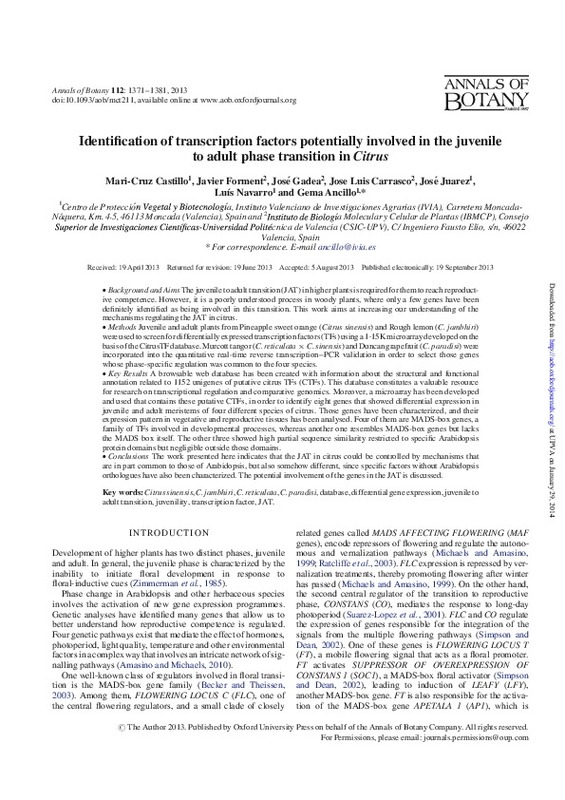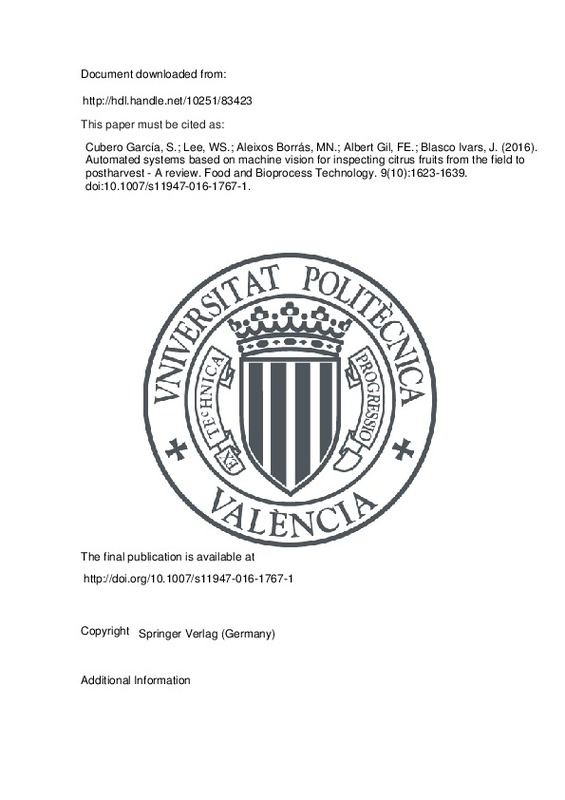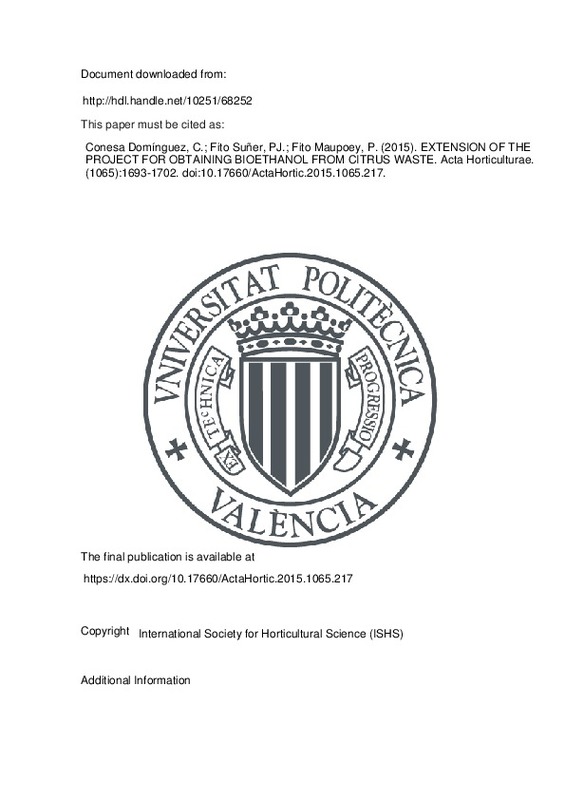Abe, M. (2005). FD, a bZIP Protein Mediating Signals from the Floral Pathway Integrator FT at the Shoot Apex. Science, 309(5737), 1052-1056. doi:10.1126/science.1115983
Adamczyk, B. J., Lehti-Shiu, M. D., & Fernandez, D. E. (2007). The MADS domain factors AGL15 and AGL18 act redundantly as repressors of the floral transition in Arabidopsis. The Plant Journal, 50(6), 1007-1019. doi:10.1111/j.1365-313x.2007.03105.x
Altschul, S. (1997). Gapped BLAST and PSI-BLAST: a new generation of protein database search programs. Nucleic Acids Research, 25(17), 3389-3402. doi:10.1093/nar/25.17.3389
[+]
Abe, M. (2005). FD, a bZIP Protein Mediating Signals from the Floral Pathway Integrator FT at the Shoot Apex. Science, 309(5737), 1052-1056. doi:10.1126/science.1115983
Adamczyk, B. J., Lehti-Shiu, M. D., & Fernandez, D. E. (2007). The MADS domain factors AGL15 and AGL18 act redundantly as repressors of the floral transition in Arabidopsis. The Plant Journal, 50(6), 1007-1019. doi:10.1111/j.1365-313x.2007.03105.x
Altschul, S. (1997). Gapped BLAST and PSI-BLAST: a new generation of protein database search programs. Nucleic Acids Research, 25(17), 3389-3402. doi:10.1093/nar/25.17.3389
Amasino, R. M., & Michaels, S. D. (2010). The Timing of Flowering: Figure 1. Plant Physiology, 154(2), 516-520. doi:10.1104/pp.110.161653
Ancillo, G., Gadea, J., Forment, J., Guerri, J., & Navarro, L. (2007). Class prediction of closely related plant varieties using gene expression profiling. Journal of Experimental Botany, 58(8), 1927-1933. doi:10.1093/jxb/erm054
Bassene, J. B., Froelicher, Y., Dhuique-Mayer, C., Mouhaya, W., Ferrer, R. M., Ancillo, G., … Ollitrault, P. (2009). Non-additive phenotypic and transcriptomic inheritance in a citrus allotetraploid somatic hybrid between C. reticulata and C. limon: the case of pulp carotenoid biosynthesis pathway. Plant Cell Reports, 28(11), 1689-1697. doi:10.1007/s00299-009-0768-1
Bassene, J. B., Froelicher, Y., Dubois, C., Ferrer, R. M., Navarro, L., Ollitrault, P., & Ancillo, G. (2009). Non-additive gene regulation in a citrus allotetraploid somatic hybrid between C. reticulata Blanco and C. limon (L.) Burm. Heredity, 105(3), 299-308. doi:10.1038/hdy.2009.162
Becker, A. (2003). The major clades of MADS-box genes and their role in the development and evolution of flowering plants. Molecular Phylogenetics and Evolution, 29(3), 464-489. doi:10.1016/s1055-7903(03)00207-0
Bielenberg, D. G., Wang, Y. (Eileen), Li, Z., Zhebentyayeva, T., Fan, S., Reighard, G. L., … Abbott, A. G. (2008). Sequencing and annotation of the evergrowing locus in peach [Prunus persica (L.) Batsch] reveals a cluster of six MADS-box transcription factors as candidate genes for regulation of terminal bud formation. Tree Genetics & Genomes, 4(3), 495-507. doi:10.1007/s11295-007-0126-9
Bohlenius, H. (2006). CO/FT Regulatory Module Controls Timing of Flowering and Seasonal Growth Cessation in Trees. Science, 312(5776), 1040-1043. doi:10.1126/science.1126038
Brill, E. M., & Watson, J. M. (2004). Ectopic expression of a Eucalyptus grandis SVP orthologue alters the flowering time of Arabidopsis thaliana. Functional Plant Biology, 31(3), 217. doi:10.1071/fp03180
Carlsbecker, A., Tandre, K., Johanson, U., Englund, M., & Engström, P. (2004). The MADS-box gene DAL1 is a potential mediator of the juvenile-to-adult transition in Norway spruce (Picea abies). The Plant Journal, 40(4), 546-557. doi:10.1111/j.1365-313x.2004.02226.x
Chen, H., Rosin, F. M., Prat, S., & Hannapel, D. J. (2003). Interacting Transcription Factors from the Three-Amino Acid Loop Extension Superclass Regulate Tuber Formation. Plant Physiology, 132(3), 1391-1404. doi:10.1104/pp.103.022434
Chuang, C.-F., Running, M. P., Williams, R. W., & Meyerowitz, E. M. (1999). The PERIANTHIA gene encodes a bZIP protein involved in the determination of floral organ number in Arabidopsis thaliana. Genes & Development, 13(3), 334-344. doi:10.1101/gad.13.3.334
Díaz-Riquelme, J., Lijavetzky, D., Martínez-Zapater, J. M., & Carmona, M. J. (2008). Genome-Wide Analysis of MIKCC-Type MADS Box Genes in Grapevine. Plant Physiology, 149(1), 354-369. doi:10.1104/pp.108.131052
Di Tommaso, P., Moretti, S., Xenarios, I., Orobitg, M., Montanyola, A., Chang, J.-M., … Notredame, C. (2011). T-Coffee: a web server for the multiple sequence alignment of protein and RNA sequences using structural information and homology extension. Nucleic Acids Research, 39(suppl), W13-W17. doi:10.1093/nar/gkr245
Ditta, G., Pinyopich, A., Robles, P., Pelaz, S., & Yanofsky, M. F. (2004). The SEP4 Gene of Arabidopsis thaliana Functions in Floral Organ and Meristem Identity. Current Biology, 14(21), 1935-1940. doi:10.1016/j.cub.2004.10.028
Dong, Y.-H., Yao, J.-L., Atkinson, R. G., Putterill, J. J., Morris, B. A., & Gardner, R. C. (2000). Plant Molecular Biology, 42(4), 623-633. doi:10.1023/a:1006301224125
Dorca-Fornell, C., Gregis, V., Grandi, V., Coupland, G., Colombo, L., & Kater, M. M. (2011). The Arabidopsis SOC1-like genes AGL42, AGL71 and AGL72 promote flowering in the shoot apical and axillary meristems. The Plant Journal, 67(6), 1006-1017. doi:10.1111/j.1365-313x.2011.04653.x
Endo, T., Shimada, T., Fujii, H., Kobayashi, Y., Araki, T., & Omura, M. (2005). Ectopic Expression of an FT Homolog from Citrus Confers an Early Flowering Phenotype on Trifoliate Orange (Poncirus trifoliata L. Raf.). Transgenic Research, 14(5), 703-712. doi:10.1007/s11248-005-6632-3
Endo, T., Shimada, T., Fujii, H., & Omura, M. (2006). Cloning and characterization of 5 MADS-box cDNAs isolated from citrus fruit tissue. Scientia Horticulturae, 109(4), 315-321. doi:10.1016/j.scienta.2006.06.008
Fernández-Ocaña, A., Carmen García-López, M., Jiménez-Ruiz, J., Saniger, L., Macías, D., Navarro, F., … Luque, F. (2010). Identification of a gene involved in the juvenile-to-adult transition (JAT) in cultivated olive trees. Tree Genetics & Genomes, 6(6), 891-903. doi:10.1007/s11295-010-0299-5
Flachowsky, H., Peil, A., Sopanen, T., Elo, A., & Hanke, V. (2007). Overexpression of BpMADS4 from silver birch (Betula pendula Roth.) induces early-flowering in apple (Malus�נdomestica Borkh.). Plant Breeding, 126(2), 137-145. doi:10.1111/j.1439-0523.2007.01344.x
Fornara, F., Gregis, V., Pelucchi, N., Colombo, L., & Kater, M. (2008). The rice StMADS11-like genes OsMADS22 and OsMADS47 cause floral reversions in Arabidopsis without complementing the svp and agl24 mutants. Journal of Experimental Botany, 59(8), 2181-2190. doi:10.1093/jxb/ern083
Gomez-Mena, C. (2005). Transcriptional program controlled by the floral homeotic gene AGAMOUS during early organogenesis. Development, 132(3), 429-438. doi:10.1242/dev.01600
Honma, T., & Goto, K. (2001). Complexes of MADS-box proteins are sufficient to convert leaves into floral organs. Nature, 409(6819), 525-529. doi:10.1038/35054083
Huang, X. (1999). CAP3: A DNA Sequence Assembly Program. Genome Research, 9(9), 868-877. doi:10.1101/gr.9.9.868
Iida, K., Seki, M., Sakurai, T., Satou, M., Akiyama, K., Toyoda, T., … Shinozaki, K. (2005). RARTF: Database and Tools for Complete Sets of Arabidopsis Transcription Factors. DNA Research, 12(4), 247-256. doi:10.1093/dnares/dsi011
Kagale, S., Links, M. G., & Rozwadowski, K. (2010). Genome-Wide Analysis of Ethylene-Responsive Element Binding Factor-Associated Amphiphilic Repression Motif-Containing Transcriptional Regulators in Arabidopsis. Plant Physiology, 152(3), 1109-1134. doi:10.1104/pp.109.151704
Krizek, B. A., & Fletcher, J. C. (2005). Molecular mechanisms of flower development: an armchair guide. Nature Reviews Genetics, 6(9), 688-698. doi:10.1038/nrg1675
Kumar, R., Kushalappa, K., Godt, D., Pidkowich, M. S., Pastorelli, S., Hepworth, S. R., & Haughn, G. W. (2007). The Arabidopsis BEL1-LIKE HOMEODOMAIN Proteins SAW1 and SAW2 Act Redundantly to Regulate KNOX Expression Spatially in Leaf Margins. The Plant Cell, 19(9), 2719-2735. doi:10.1105/tpc.106.048769
Li, Z.-M., Zhang, J.-Z., Mei, L., Deng, X.-X., Hu, C.-G., & Yao, J.-L. (2010). PtSVP, an SVP homolog from trifoliate orange (Poncirus trifoliata L. Raf.), shows seasonal periodicity of meristem determination and affects flower development in transgenic Arabidopsis and tobacco plants. Plant Molecular Biology, 74(1-2), 129-142. doi:10.1007/s11103-010-9660-1
Michaels, S. D., & Amasino, R. M. (1999). FLOWERING LOCUS C Encodes a Novel MADS Domain Protein That Acts as a Repressor of Flowering. The Plant Cell, 11(5), 949-956. doi:10.1105/tpc.11.5.949
Moon, J., Suh, S.-S., Lee, H., Choi, K.-R., Hong, C. B., Paek, N.-C., … Lee, I. (2003). TheSOC1MADS-box gene integrates vernalization and gibberellin signals for flowering inArabidopsis. The Plant Journal, 35(5), 613-623. doi:10.1046/j.1365-313x.2003.01833.x
Müller, J., Wang, Y., Franzen, R., Santi, L., Salamini, F., & Rohde, W. (2001). In vitro interactions between barley TALE homeodomain proteins suggest a role for protein-protein associations in the regulation of Knox gene function. The Plant Journal, 27(1), 13-23. doi:10.1046/j.1365-313x.2001.01064.x
Muñoz-Fambuena, N., Mesejo, C., Carmen González-Mas, M., Primo-Millo, E., Agustí, M., & Iglesias, D. J. (2011). Fruit regulates seasonal expression of flowering genes in alternate-bearing ‘Moncada’ mandarin. Annals of Botany, 108(3), 511-519. doi:10.1093/aob/mcr164
Navarro, L. (1990). Shoot-Tip Grafting in Vitro of Woody Species and Its Influence on Plant Age. Plant Aging, 117-123. doi:10.1007/978-1-4684-5760-5_14
Nishikawa, F., Endo, T., Shimada, T., Fujii, H., Shimizu, T., & Omura, M. (2009). Differences in seasonal expression of flowering genes between deciduous trifoliate orange and evergreen Satsuma mandarin. Tree Physiology, 29(7), 921-926. doi:10.1093/treephys/tpp021
Peña, L., Martín-Trillo, M., Juárez, J., Pina, J. A., Navarro, L., & Martínez-Zapater, J. M. (2001). Constitutive expression of Arabidopsis LEAFY or APETALA1 genes in citrus reduces their generation time. Nature Biotechnology, 19(3), 263-267. doi:10.1038/85719
Pelaz, S., Ditta, G. S., Baumann, E., Wisman, E., & Yanofsky, M. F. (2000). B and C floral organ identity functions require SEPALLATA MADS-box genes. Nature, 405(6783), 200-203. doi:10.1038/35012103
Ratcliffe, O. J., Kumimoto, R. W., Wong, B. J., & Riechmann, J. L. (2003). Analysis of the Arabidopsis MADS AFFECTING FLOWERING Gene Family: MAF2 Prevents Vernalization by Short Periods of Cold. The Plant Cell, 15(5), 1159-1169. doi:10.1105/tpc.009506
Reiser, L., Modrusan, Z., Margossian, L., Samach, A., Ohad, N., Haughn, G. W., & Fischer, R. L. (1995). The BELL1 gene encodes a homeodomain protein involved in pattern formation in the Arabidopsis ovule primordium. Cell, 83(5), 735-742. doi:10.1016/0092-8674(95)90186-8
Riechmann, J. L., Krizek, B. A., & Meyerowitz, E. M. (1996). Dimerization specificity of Arabidopsis MADS domain homeotic proteins APETALA1, APETALA3, PISTILLATA, and AGAMOUS. Proceedings of the National Academy of Sciences, 93(10), 4793-4798. doi:10.1073/pnas.93.10.4793
Rottmann, W. H., Meilan, R., Sheppard, L. A., Brunner, A. M., Skinner, J. S., Ma, C., … Strauss, S. H. (2000). Diverse effects of overexpression of LEAFY and PTLF, a poplar (Populus) homolog of LEAFY/FLORICAULA, in transgenic poplar and Arabidopsis. The Plant Journal, 22(3), 235-245. doi:10.1046/j.1365-313x.2000.00734.x
Samach, A. (2012). Congratulations, you have been carefully chosen to represent an important developmental regulator! Annals of Botany, 111(3), 329-333. doi:10.1093/aob/mcs161
Shore, P., & Sharrocks, A. D. (1995). The MADS-Box Family of Transcription Factors. European Journal of Biochemistry, 229(1), 1-13. doi:10.1111/j.1432-1033.1995.tb20430.x
Simpson, G. G. (2002). Arabidopsis, the Rosetta Stone of Flowering Time? Science, 296(5566), 285-289. doi:10.1126/science.296.5566.285
Smith, H. M. ., Campbell, B. C., & Hake, S. (2004). Competence to Respond to Floral Inductive Signals Requires the Homeobox Genes PENNYWISE and POUND-FOOLISH. Current Biology, 14(9), 812-817. doi:10.1016/j.cub.2004.04.032
Suárez-López, P., Wheatley, K., Robson, F., Onouchi, H., Valverde, F., & Coupland, G. (2001). CONSTANS mediates between the circadian clock and the control of flowering in Arabidopsis. Nature, 410(6832), 1116-1120. doi:10.1038/35074138
Tan, F.-C., & Swain, S. M. (2006). Genetics of flower initiation and development in annual and perennial plants. Physiologia Plantarum, 128(1), 8-17. doi:10.1111/j.1399-3054.2006.00724.x
Tan, F.-C., & Swain, S. M. (2007). Functional characterization of AP3, SOC1 and WUS homologues from citrus (Citrus sinensis). Physiologia Plantarum, 131(3), 481-495. doi:10.1111/j.1399-3054.2007.00971.x
Tominaga, R., Iwata, M., Sano, R., Inoue, K., Okada, K., & Wada, T. (2008). Arabidopsis CAPRICE-LIKE MYB 3 (CPL3) controls endoreduplication and flowering development in addition to trichome and root hair formation. Development, 135(7), 1335-1345. doi:10.1242/dev.017947
Tusher, V. G., Tibshirani, R., & Chu, G. (2001). Significance analysis of microarrays applied to the ionizing radiation response. Proceedings of the National Academy of Sciences, 98(9), 5116-5121. doi:10.1073/pnas.091062498
Van der Linden, C. G. (2002). Cloning and characterization of four apple MADS box genes isolated from vegetative tissue. Journal of Experimental Botany, 53(371), 1025-1036. doi:10.1093/jexbot/53.371.1025
Varkonyi-Gasic, E., Moss, S. M., Voogd, C., Wu, R., Lough, R. H., Wang, Y.-Y., & Hellens, R. P. (2011). Identification and characterization of flowering genes in kiwifruit: sequence conservation and role in kiwifruit flower development. BMC Plant Biology, 11(1), 72. doi:10.1186/1471-2229-11-72
Wang, J.-W., Czech, B., & Weigel, D. (2009). miR156-Regulated SPL Transcription Factors Define an Endogenous Flowering Pathway in Arabidopsis thaliana. Cell, 138(4), 738-749. doi:10.1016/j.cell.2009.06.014
Wang, R., Farrona, S., Vincent, C., Joecker, A., Schoof, H., Turck, F., … Albani, M. C. (2009). PEP1 regulates perennial flowering in Arabis alpina. Nature, 459(7245), 423-427. doi:10.1038/nature07988
Wu, G., Park, M. Y., Conway, S. R., Wang, J.-W., Weigel, D., & Poethig, R. S. (2009). The Sequential Action of miR156 and miR172 Regulates Developmental Timing in Arabidopsis. Cell, 138(4), 750-759. doi:10.1016/j.cell.2009.06.031
Xu, Q., Chen, L.-L., Ruan, X., Chen, D., Zhu, A., Chen, C., … Ruan, Y. (2012). The draft genome of sweet orange (Citrus sinensis). Nature Genetics, 45(1), 59-66. doi:10.1038/ng.2472
Zhang, J.-Z., Li, Z.-M., Mei, L., Yao, J.-L., & Hu, C.-G. (2009). PtFLC homolog from trifoliate orange (Poncirus trifoliata) is regulated by alternative splicing and experiences seasonal fluctuation in expression level. Planta, 229(4), 847-859. doi:10.1007/s00425-008-0885-z
Zhu, Q.-H., Guo, A.-Y., Gao, G., Zhong, Y.-F., Xu, M., Huang, M., & Luo, J. (2007). DPTF: a database of poplar transcription factors. Bioinformatics, 23(10), 1307-1308. doi:10.1093/bioinformatics/btm113
[-]












